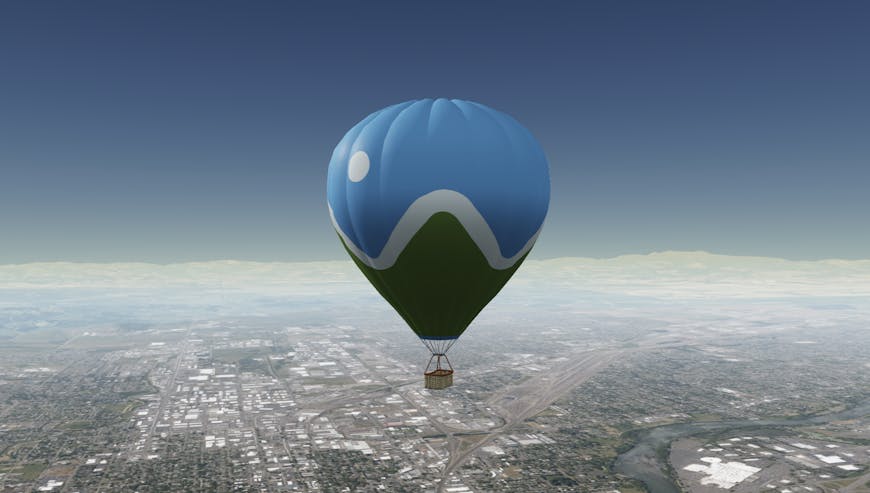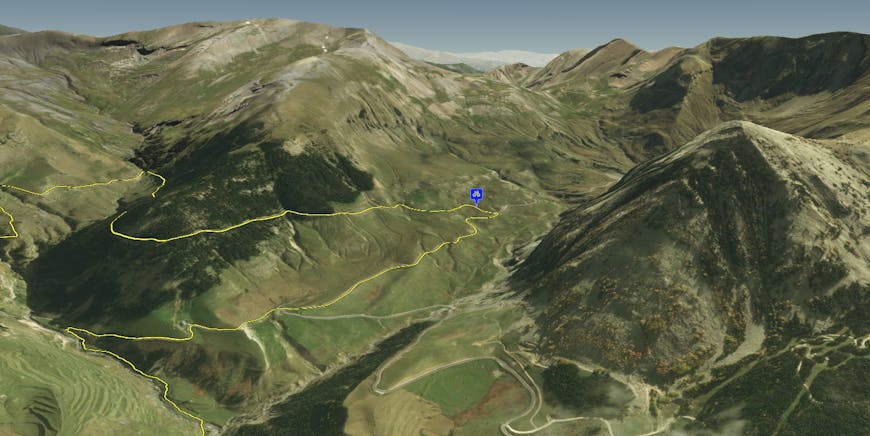Cesium Releases in March 2022
This month we released Cesium for O3DE, making O3DE the newest visualization engine in the Cesium ecosystem. This integration brings together the open source Cesium community and open source O3DE community to enable 3D Tiles and a full-scale, high-accuracy WGS84 globe in O3DE’s open-source real-time 3D game engine. To get started building with Cesium for O3DE, check out our growing collection of tutorials.
CesiumJS 1.91 Release
CesiumJS 1.91 is now available. One of the biggest additions in this release is multi-sample anti-aliasing (MSAA) support for WebGL2. This feature has been widely requested by the community and improves visual quality by reducing aliasing artifacts. It is not enabled by default, and can be controlled through Scene.msaaSamples after requesting a WebGL2 context in the Viewer constructor:
var viewer = new Cesium.Viewer("cesiumContainer", {
contextOptions: {
requestWebgl2: true,
},
msaaSamples: 4
});

MSAA reduces rendering artifacts. Note the smooth lines on the balloon, especially on the gondola and cables.
Other highlights of the release include:
- Added support for loading GPX files.
- glTF contents now use
ModelExperimentalby default. - Improved
ModelExperimentalwith the ability to toggle back-face culling, support fordebugColorTiles, and support for shadows. - Added
depthPlaneEllipsoidOffsetto Viewer and Scene constructors to address rendering artifacts below ellipsoid zero elevation. - Added
packArrayandunpackArrayfor matrix types. - Added option to show tileset credits on screen.
See the changelog for a full list of updates and links to the discussion & code on each one. You can also subscribe to the Cesium roundup release thread on the community forum to get notifications about our monthly releases.

CesiumJS now supports GPX files.
See the changelog for a full list of updates and links to the discussion & code on each one. You can also subscribe to the Cesium roundup release thread on the community forum to get notifications about our monthly releases.
Cesium for Unreal 1.11.0 Release
Cesium for Unreal and Cesium Native are now updated. Highlights include:
- Added experimental support for Unreal Engine 5 (preview 1).
- Added support for KTX 2.0 compressed textures. These are fed to Unreal Engine in a suitable and supported compressed texture format.
- Numerous bug fixes and allowances to enable compatibility with a wider variety of 3D Tiles tilesets.
- Improved support for loading glTF and quantized-mesh (terrain) content from file URLs or with imperfect Content-Type headers by looking at file extensions.
- Added the ability to set the Georeference origin from ECEF coordinates in Blueprints and C++.
- Improved the shadows, making shadows fading in and out less noticeable.
Check the Cesium for Unreal changelog, the Cesium for Unreal Samples, and the Cesium Native 0.13.0 changelog for a full list of updates.
Cesium for O3DE 1.0.0 Release
This is the initial release of Cesium for O3DE! The release includes:
- High-accuracy, global-scale WGS84 globe for visualization of real-world 3D content
- 3D Tiles runtime engine to stream massive 3D geospatial datasets, such as terrain, imagery, 3D cities, and photogrammetry
- Streaming from the cloud, a private network, or the local machine.
- Level-of-detail selection
- Caching
- Multithreaded loading
- Batched 3D Model (B3DM) content, including the B3DM content inside Composite (CMPT) tiles
- glTF content
- quantized-mesh terrain loading and rendering
- Bing Maps and Tile Map Service (TMS) raster overlays draped on terrain
- Integrated with Cesium ion for instant access to cloud based global 3D content.
- Integrated with O3DE Engine Editor, Entities and Components, and Script Canvas.
Powered by Cesium
This month we saw impressive work from CAE in creating complex, city-scale simulations of dense urban environments. CAE’s digital twin of London integrates data about energy infrastructure, traffic, emergency services, cybersecurity, and networks with massive photogrammetric models of the physical environment. This data is streamed with 3D Tiles into CesiumJS for web-based visualizations and Unreal Engine for simulations.